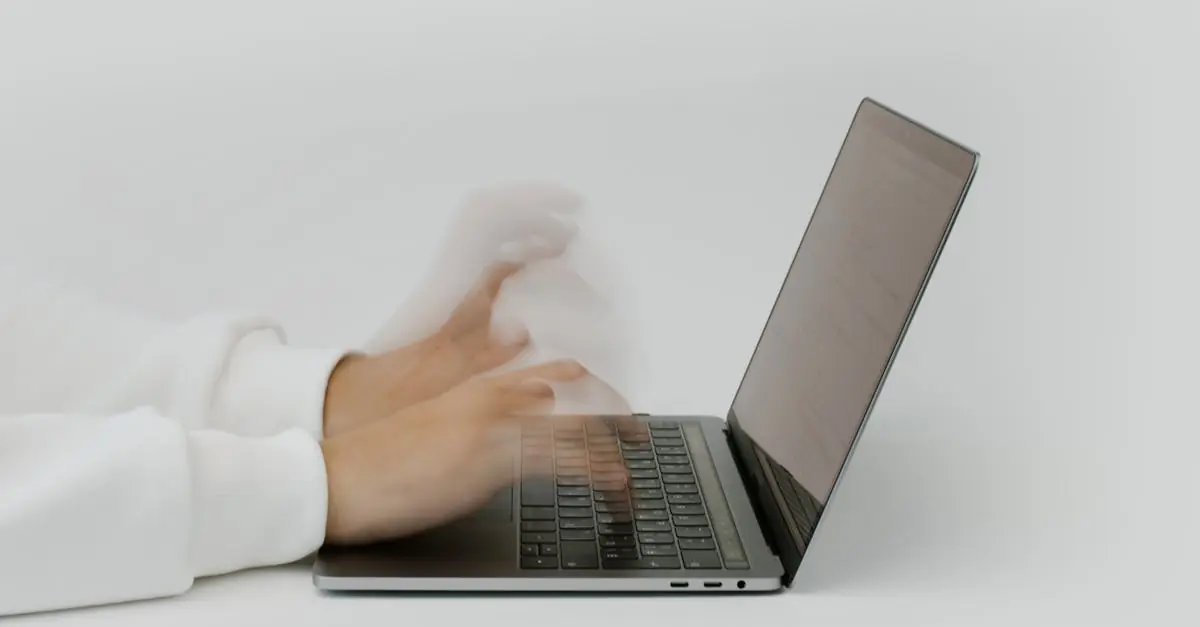Table of Contents
ToggleIn a world where waiting feels like an eternity, gadget recharging speed is the unsung hero of modern life. Imagine this: you’re on the brink of a Netflix binge, only to realize your phone’s battery is gasping for life. Panic sets in. But fear not! Understanding how quickly your gadgets can recharge isn’t just a matter of convenience; it’s a game-changer that can keep your digital life flowing smoothly.
Understanding Gadget Recharging Speed
Gadget recharging speed measures how quickly a device’s battery reaches full capacity. This metric plays a vital role in everyday user experiences and overall device efficiency.
What Is Gadget Recharging Speed?
Gadget recharging speed indicates the time taken for a device’s battery to charge. Speed can vary widely among different gadgets, from smartphones to laptops. Typically, manufacturers provide charging rates in watts, illustrating how much power flows into the battery per hour. For instance, a device charging at 20 watts can fully charge a compatible battery faster than one charging at 10 watts. Understanding these specifications helps users select devices that align with their charging needs.
Factors Affecting Recharging Speed
Several elements influence recharging speed for gadgets. First, the type of charger significantly affects the rate. Fast chargers utilize advanced technology to increase power delivery without harming the battery. Second, the battery’s chemistry determines how efficiently it can accept a charge; lithium-ion batteries often charge faster than older types. Third, the device’s design impacts performance; certain gadgets feature optimized circuitry to enhance recharging speed. Finally, environmental conditions, such as temperature, also play a role. Higher temperatures can slow the charging process, while cooler environments may enhance it.
Types of Charging Technologies
Understanding charging technologies is essential for optimizing gadget recharging speed. This section covers various methods used for recharging devices.
Wired Charging
Wired charging remains the most common method. Various USB cables deliver power directly from the outlet to the device. Charging speeds depend on the type of charger and cable used. For instance, USB-C can achieve up to 100 watts, making it suitable for laptops. Devices often come with chargers that match their power requirements, influencing how quickly they recharge. Additionally, using third-party chargers may impact charging efficiency, so it’s crucial to choose reliable products.
Wireless Charging
Wireless charging utilizes electromagnetic fields to transfer energy. Devices placed on a charging pad receive power without physical connections. While convenient, this method usually recharges gadgets at slower speeds than wired options. Most wireless chargers provide powers ranging from 5 watts to 15 watts. Some advanced models support fast wireless charging, which can accelerate the process. Users should consider the device’s compatibility with specific wireless standards, such as Qi, to ensure optimal performance.
Fast Charging
Fast charging technology significantly reduces the time required to recharge batteries. Manufacturers implement this feature by increasing voltage and current delivered to the device. Fast chargers can typically provide power levels of 18 watts or more, allowing batteries to reach substantial percentages in a short time. Smartphones and tablets often support various fast charging standards, including Qualcomm Quick Charge and USB Power Delivery. Ensuring that both the device and charger support the same fast charging protocol maximizes efficiency.
Comparison of Recharging Speeds
Gadget recharging speeds vary widely among devices. Understanding these differences can enhance user satisfaction and device performance.
Common Gadgets and Their Speeds
Smartphones typically recharge at speeds ranging from 5 watts to 120 watts. For instance, flagship models can reach full charge in about 30 minutes with fast charging technology. Laptops usually depend on the charger type, with speeds from 45 watts to 100 watts, taking 1 to 3 hours for a full recharge. Tablets generally fall between 10 watts and 30 watts, often requiring 2 to 4 hours for complete charging. Wireless earbuds recharge in under an hour, benefiting from efficient compact battery design. Each gadget’s charging capacity hinges on its hardware specifications and compatibility with the charger.
Best Practices for Optimal Recharging
Using the right charger maximizes recharging efficiency. Employing OEM chargers ensures compatibility, as they meet manufacturer specifications. Avoiding low-quality cables is essential, since they may limit power flow and prolong charging time. Keeping devices at room temperature aids battery health, as extreme heat can slow down recharging speeds. When multiple devices share a charger, prioritizing larger gadgets allows for faster overall completion. Regularly updating the device’s software can also optimize charging performance, enhancing the user experience.
The Future of Gadget Recharging Speed
As technology advances, gadget recharging speed evolves. Manufacturers continuously seek innovative solutions to enhance efficiency and user experience.
Emerging Technologies
New charging technologies such as GaN (gallium nitride) chargers offer significant benefits. These chargers operate at higher efficiency levels than traditional silicon-based options. Additionally, developments in battery technology, like lithium-sulfur batteries, promise quicker charging times and longer lifespans. Charging pads with improved electromagnetic fields are also becoming more prevalent. Devices that support these advancements can recharge faster without compromising safety. Furthermore, progress in smart charging algorithms enables devices to optimize power intake based on battery status, enhancing the overall efficiency of recharging.
Predictions and Trends
In the coming years, gadget recharging speeds are expected to increase consistently. Analysts predict high-end smartphones could feature charging speeds of up to 200 watts by 2025. Additionally, wireless charging is likely to experience advancements, potentially reaching speeds over 30 watts. With a growing focus on sustainability, manufacturers may prioritize eco-friendly charging options. Smart home integration could also play a role, allowing devices to recharge automatically based on user habits. Fast charging standards are expected to unify, simplifying compatibility among various devices. These trends highlight the future trajectory toward efficient, user-friendly charging experiences.
Gadget recharging speed plays a crucial role in enhancing user experience in today’s digital landscape. As technology continues to advance, the demand for faster and more efficient charging solutions is only set to grow. With innovations like GaN chargers and lithium-sulfur batteries on the horizon, users can expect significant improvements in recharge times and battery longevity.
Staying informed about charging technologies and best practices will empower users to make the most of their devices. As manufacturers work towards unified fast charging standards, the future promises to deliver a seamless and efficient charging experience that aligns with modern lifestyles. Embracing these developments will ensure that staying connected remains hassle-free and convenient.





